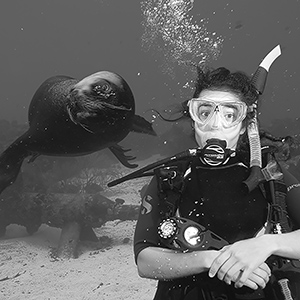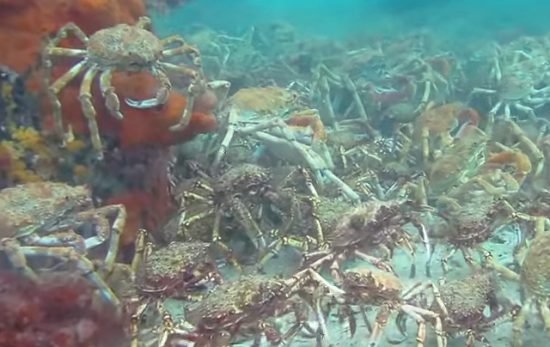The underwater world is full of amazing creatures only scuba divers get to see. Many of us learn to scuba dive because we dream of diving with dolphins or want to see manta rays dance in the moonlight.
After you’ve been diving for a while (or if you’re a total fish nerd to begin with), more unusual animals may start to appear on your scuba diving bucket list. Here are a just a few weird and wonderful favorites.
Red-lipped Batfish
The red-lipped batfish, also known as the Galapagos batfish, lives off the shores of The Galapagos Islands and Peru. Like its cousin, the Cocos batfish, the red-lipped batfish can both walk and swim (although, it doesn’t do either one particularly well).
Learn more about the red-lipped batfish.
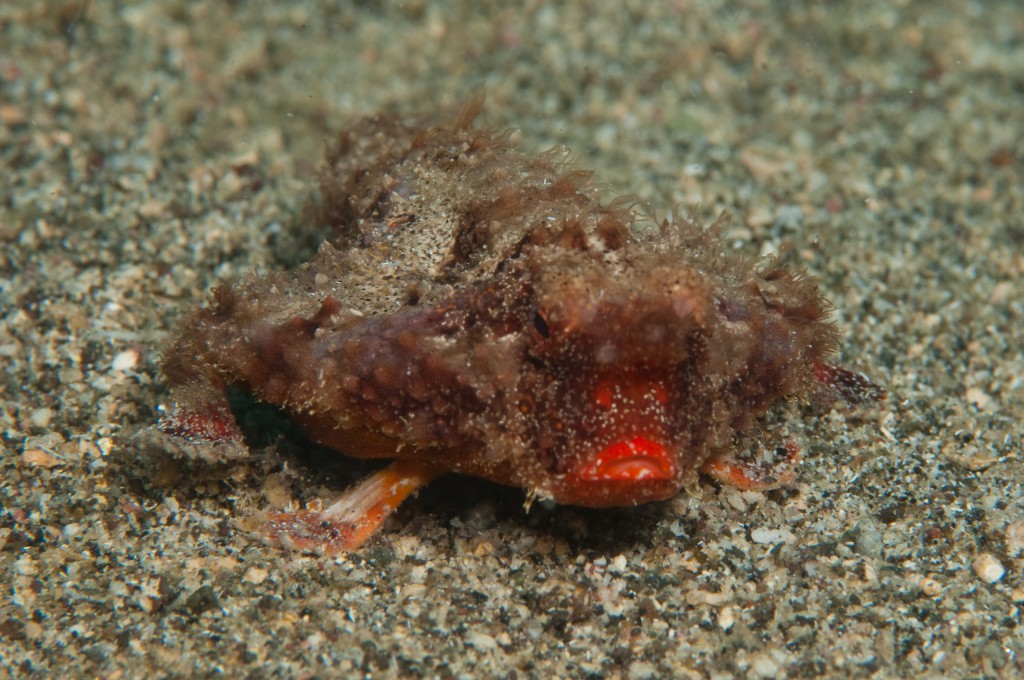
Glaucus Atlanticus, Blue Glaucus
I’ll never forget the first time someone told me about the glaucus atlanticus (also known as a blue glaucus). I was a relatively new diver talking to an old salt at a dive show.
I asked, “what’s the number one animal you hope to see on a dive someday?” He said, “ever heard of a man of war nudibranch?”
I imagined a massive, angry nudibranch that prowled the ocean eating jellyfish, something like the sand worms from Beetlejuice but with only one mouth. Turns out the Man of War nudibranch (commonly called a blue glaucus) is quite small. It can only grow to a maximum length of 3 cm/1 inch. Some are so tiny they can perch comfortably on your fingertip. That said, you should never touch a glaucus atlanticus (or any other sea creature).
The glaucus atlanticus can absorb toxic chemicals and stinging cells from jellyfish into its skin. By repurposing the defense mechanisms of its prey, the blue glaucus can ward off predators and unsuspecting humans.
Glaucus atlanticus is a pelagic nudibranch, which means it spends its life throughout the entire water column, not just on the reef. They can be hard to spot when diving because they’re so small. You’re most likely to find them floating at the surface or in a tide pool.
Love unusual sea slugs? Check out the sea bunny nudibranch or get your favorite unusual nudi as a pin.
Black Sea Hare
You may be wondering, what’s the largest sea slug? So glad you asked. It’s the Black Sea Hare. A black sea hare can grow up to 99 cm/3 ft 3 inches long and weigh as much as a 2-3 year-old toddler (14 kg/30 lb).
Black Sea Hares live along the coast of California, USA and Baja, Mexico. Its name comes from the creature’s rabbit ear-esque appendages.
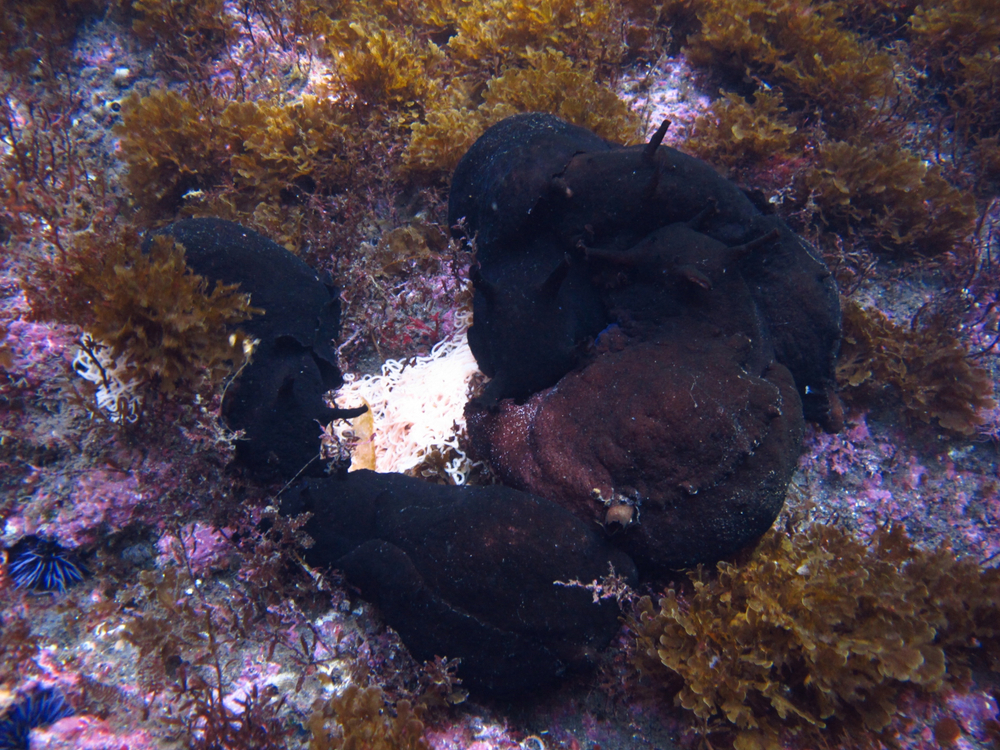
Ribbon Eel
While the Black Sea Hare doesn’t look much like its namesake, the ribbon eel certainly does. This captivating creature lives in lagoons or coastal reefs throughout the Indian Ocean and in the central and southern areas of the Pacific Ocean.
Harlequin Shrimp
Free-swimming eels can be hard to photograph, but harlequin shrimp are equally mesmerizing and don’t move around as much. As an added bonus: you often find these speckled shrimp in male-female pairs. They mate for life and tend to stay in the same area for months. Bali, Indonesia, the Pacific side of Costa Rica, Hawai’i and Philippines are great places to find and photograph harlequin shrimp.
Conservation note: harlequin shrimp are popular in the aquarium trade. If you find harlequin shrimp on the reef, be careful who you tell.
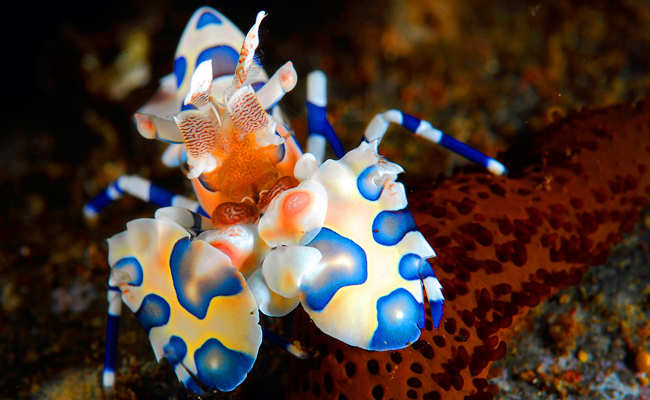
Dogface Puffer
There are more than 100 different types of pufferfish, but the dogface pufferfish (also known as the blackspotted puffer) is a favorite among many. The dogface puffer can have dark patches around its eyes and snout giving it a puppy-like appearance.
A dogface puffer can inflate to twice its normal size as a defense mechanism. The animal will do this to prevent being eaten, but it can die as a result. You would never deliberately frighten man’s best friend, and you shouldn’t stress out a pufferfish either. If you’re curious to see what a dogface pufferfish looks like when it’s puffed up, there are plenty of videos on YouTube.
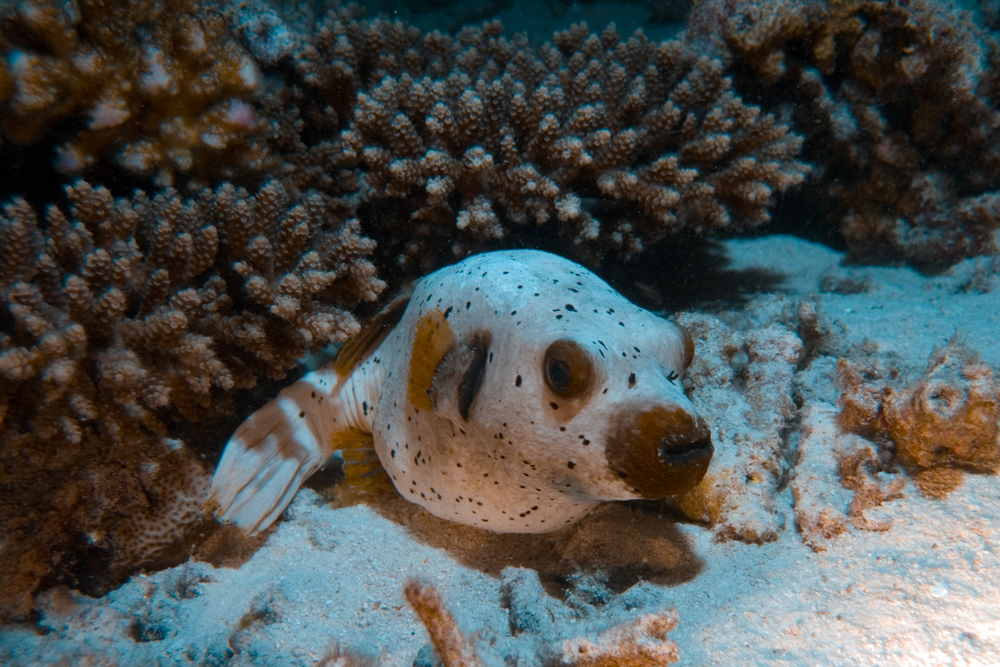
Barreleye Fish
The last fish on our list you’re unlikely to see on a dive, but it’s so unusual we had to include it.
The barreleye fish (Macropinna microstoma) has a see-through head! It looks like something from a science fiction movie.
Barreleye Fish live in the tropical-to-temperate areas of the Atlantic, Pacific, and Indian Oceans. Unfortunately for divers, their habitat is quite deep, around 182 m/600 feet.
Want to learn more about the amazing animals that live in our oceans? Ask your PADI® Instructor about the Underwater Naturalist Specialty course.
Want to see some of these unusual creatures up close and personal? A dive travel specialist at PADI Travel® can help you find the perfect destination.

